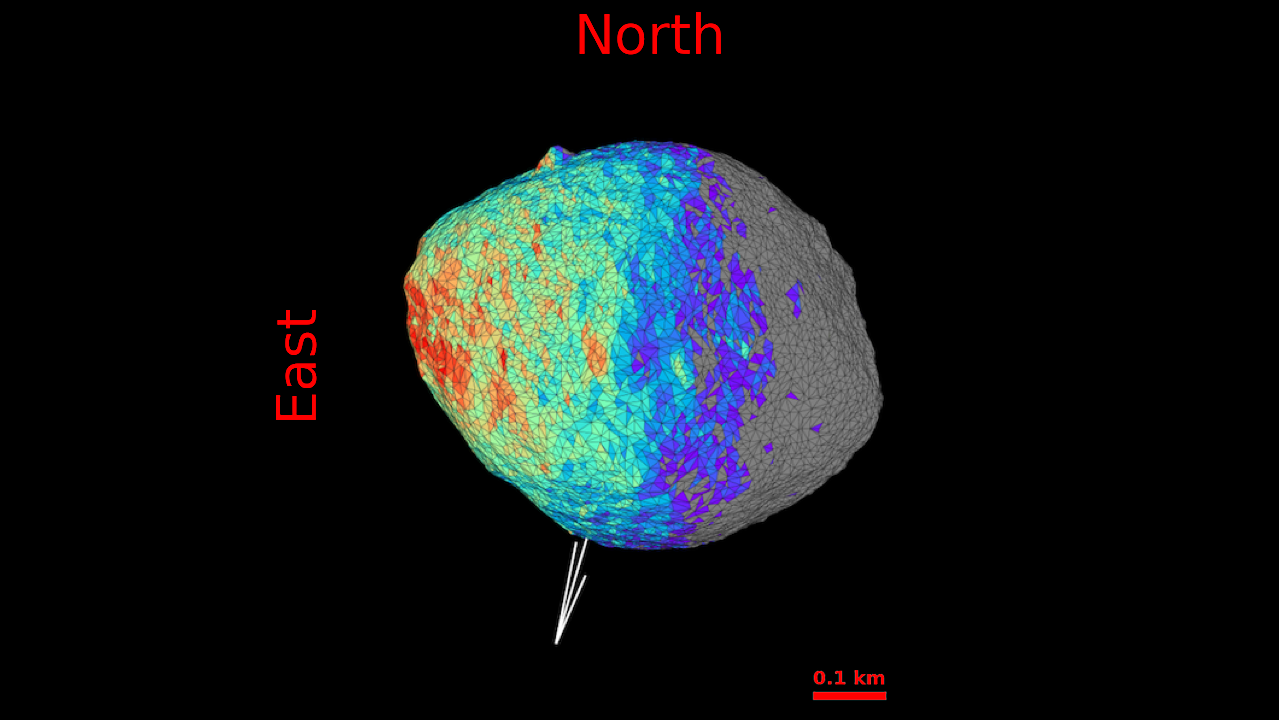Science
New Web Tool Enhances Simulation of Solar System Light Curves

Researchers have introduced a new web-based application that simulates the rotational light curves of small, airless bodies in the Solar System. This innovative tool allows users to define specific geometrical and physical conditions, ultimately enhancing the analysis of these celestial objects.
The application integrates both physical and empirical photometric models, enabling users to input customized shape models, surface properties, and viewing geometries. It also features a dedicated module that computes projected silhouettes during stellar occultations, facilitating direct comparisons with observed data. Developed using Python and Django, this tool has been validated against well-characterized targets such as (136108) Haumea, (101955) Bennu, and (433) Eros, demonstrating a strong correlation between synthetic and observed light curves.
Comprehensive Analysis Capabilities
Beyond standard simulations, the tool accommodates complex scenarios, including surface heterogeneity, tumbling (non-principal axis rotation), and phase-angle effects. This flexibility allows researchers to explore a wide range of conditions that may affect the light curves of small Solar System objects.
According to the development team, which includes Juan Luis Rizos, J. L. Ortiz, P. J. Gutierrez, I. M. Navajas, and L. M. Lara, the application is designed to be an accessible platform for interpreting photometric data. It is particularly beneficial for ongoing observation campaigns and future mission planning, offering a vital resource for both academic and professional astronomers.
The tool’s development represents a significant advancement in the field of Earth and Planetary Astrophysics, as it enhances the ability to analyze and understand the behavior of small celestial bodies. With the capability to simulate varied rotational dynamics and surface characteristics, researchers can gain deeper insights into the composition and evolution of these objects.
The application can be accessed via the arXiv platform, under the identifier arXiv:2510.03192, and stands as a promising resource for advancing astrophysical research. As the scientific community continues to explore the complexities of the Solar System, tools like this one are essential for pushing the boundaries of knowledge in the field.
-

 Technology4 months ago
Technology4 months agoDiscover the Top 10 Calorie Counting Apps of 2025
-

 Health2 months ago
Health2 months agoBella Hadid Shares Health Update After Treatment for Lyme Disease
-

 Health3 months ago
Health3 months agoErin Bates Shares Recovery Update Following Sepsis Complications
-

 Technology3 weeks ago
Technology3 weeks agoDiscover 2025’s Top GPUs for Exceptional 4K Gaming Performance
-

 Technology2 months ago
Technology2 months agoElectric Moto Influencer Surronster Arrested in Tijuana
-

 Technology4 months ago
Technology4 months agoDiscover How to Reverse Image Search Using ChatGPT Effortlessly
-

 Technology4 months ago
Technology4 months agoMeta Initiates $60B AI Data Center Expansion, Starting in Ohio
-

 Technology4 months ago
Technology4 months agoRecovering a Suspended TikTok Account: A Step-by-Step Guide
-

 Health4 months ago
Health4 months agoTested: Rab Firewall Mountain Jacket Survives Harsh Conditions
-

 Lifestyle4 months ago
Lifestyle4 months agoBelton Family Reunites After Daughter Survives Hill Country Floods
-

 Technology3 months ago
Technology3 months agoUncovering the Top Five Most Challenging Motorcycles to Ride
-

 Technology4 weeks ago
Technology4 weeks agoDiscover the Best Wireless Earbuds for Every Lifestyle





















